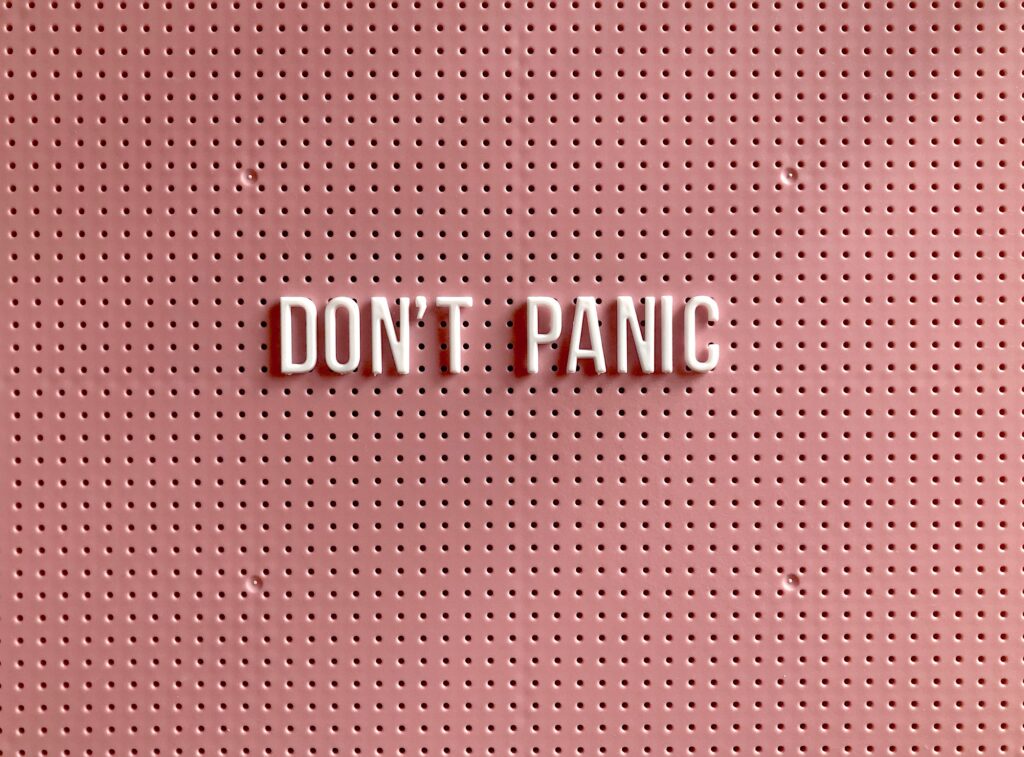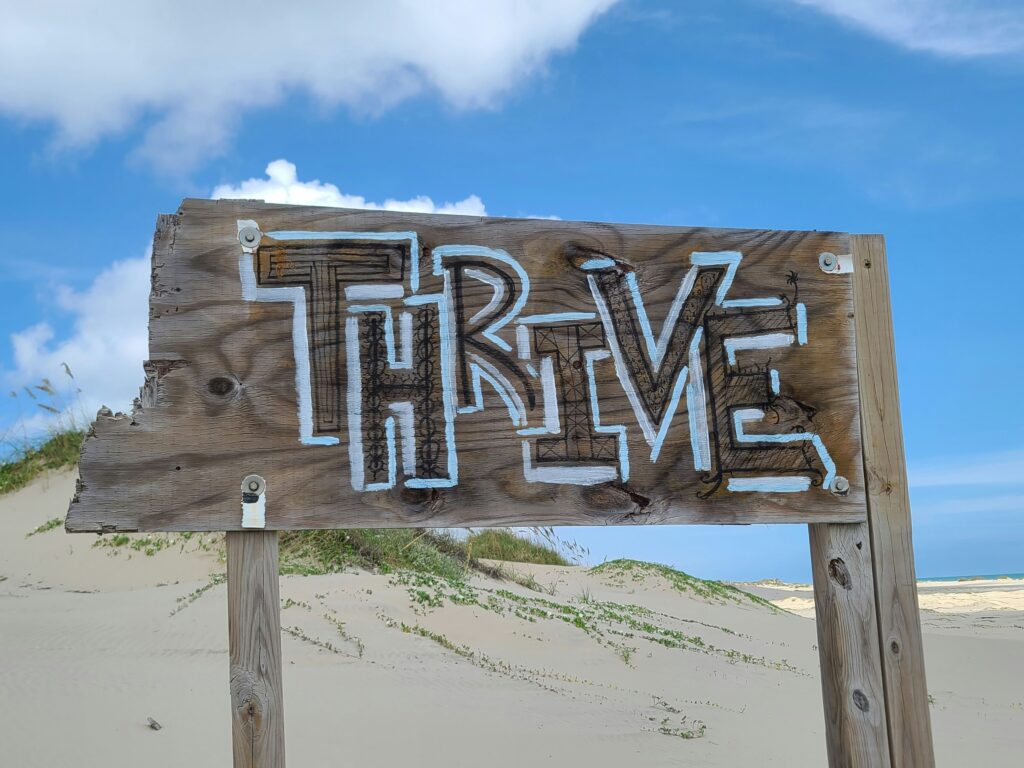Strategy
Go where your heart leads you for now.
Some of our Favourites
I’m a white label operations specialist. That means I built some of the best systems you saw last month. However, you just don’t know it was me. In fact, I’m the person probably behind some of the businesses you follow. The ones that look organized, automated, and put-together. For example, the VA agencies with perfect […]

Read More

I’m a white label operations specialist.
That means I built some of the best systems you saw last month. However, you just don’t know it was me. In fact, I’m the person probably behind some of the businesses you follow. The ones that look organized, automated, and put-together.
For example, the VA agencies with perfect client portals. Or the membership communities that feel curated. Additionally, the launches that run smoothly.
Usually, there’s someone like me behind that. A white label operations specialist who builds systems that make other businesses look good.
What White Label Operations Means
First, white label operations means I build systems for other businesses. However, my name doesn’t go on the final product. Instead, my clients get the credit (which I don’t mind). As a result, their businesses look seamless. Meanwhile, I stay behind the scenes.
Ultimately, my job is to build backend operations that work. Systems that don’t break. And workflows that run smoothly.
What I Built Last Month
Here’s what I actually built in November.
1. A VA Operations System for 15+ Clients
To begin with, I built a system that tracks time, tasks, and teamwork across 15+ clients. Specifically, I moved every client into a new workspace. Then, I created portals for each client. Next, I built automation in Airtable that captures time from ClickUp. Finally, I designed dashboards that show where every hour goes.
The result? A business owner who finally knows where their team’s time goes. Now, they look organized. But six weeks ago? It was chaos.
2. A Membership Community
Similarly, I built a member journey from payment to completion. All automated. First, I designed Free and Paid community spaces. Then, I built automated welcome flows. Additionally, I created a partner matching system in Airtable. Finally, I moved everyone from Facebook to Circle.
The result? A membership that launched in 30 days. Now, it feels like it’s been running for years. Therefore, the business owner gets credit for being “great at community.” But in reality, I built what makes it work.
3. A Multi-Funnel Lead System
Furthermore, I built a system that tracks every lead from first contact to purchase. Plus, it runs automatically across multiple platforms. Specifically, I created a Finance Hub in Airtable. Then, I designed QR code funnels for events. Next, I built two speaking funnels. Finally, I connected ThriveCart to Airtable to Flodesk.
The result? A business owner who knows where every dollar comes from. Better yet, no manual work needed.
4. A Workspace Rebuild
In addition, I rebuilt an entire workspace. Three email accounts became one. Years of files got organized. Meanwhile, the team moved to new systems. And zero downtime. First, I merged 3 Gmail accounts. Then, I organized Google Drive. Next, I rebuilt all automations. Finally, I brought the whole team into new systems.
The result? A business that went from “total mess” to “perfectly organized” in 30 days.
5. Launch Systems
Moreover, I built a system where everything from purchase to completion happens automatically. First, I set up ThriveCart with upsells. Then, I created automated emails. Next, I designed client journeys. Finally, I built Slack automation for engagement.
The result? A Black Friday launch with sales. Plus, zero tech problems.
This Is White Label Operations
As a white label operations specialist, I don’t get credit for the systems I build. However, that’s how it should be.
Instead, my job is to build backend operations that make my clients look like experts.
In other words, the businesses you admire aren’t magic. Rather, they just have good business systems built the right way.
Work With Me Before 2026
So, if you want your business to run like that, it can.
The Dark Room ($650/month)
Monthly operations support. In other words, your tech help on call. Currently taking 2 clients.
Second Brain Intensive ($650)
3-hour session to get everything from your head into systems. Plus, recording and action plan included. Currently taking 5 clients before Dec 20.
Systems Snapshot ($350)
90-minute audit with video walkthrough and action plan. As a result, you’ll know what to fix. Currently taking 5 clients before Dec 20.
Book a call or email me with which option works for you.
After all, the businesses you admire have a white label operations specialist behind them. You could too.

Read More
What Bozoma Saint John Taught Me About Systems, Soul, and Showing Up Fully Some books teach you something. Others crack you open and rebuild you. The Urgent Life by Bozoma Saint John did both with these creative CEO business lessons. Initially, I read it as a woman, a systems strategist, and a creative CEO, and […]

Read More
What Bozoma Saint John Taught Me About Systems, Soul, and Showing Up Fully

Some books teach you something. Others crack you open and rebuild you. The Urgent Life by Bozoma Saint John did both with these creative CEO business lessons.
Initially, I read it as a woman, a systems strategist, and a creative CEO, and every page felt like a wake-up call. Not just about grief, but about how much of our work is built on urgency that isn’t ours, pressure that isn’t healthy, and systems that don’t actually serve us.
However, after losing her husband to cancer at just 34, Saint John discovered what she calls “the freedom of urgency” — not the panic-inducing urgency of deadlines, but the profound clarity that comes when you realize how precious time truly is.
As a result, creative CEO business lessons reminded me that love is the strategy. Clarity is the vehicle. And surviving? That’s not the goal — thriving is.
Therefore, I pulled five of the most soul-shifting creative CEO business lessons and translated them into how I show up for my clients, my business, and myself. If you’ve been building on fumes, stuck in chaos, or questioning whether it’s all worth it, this is for you.

1. Urgency Isn’t Panic — It’s Presence.
What the book says:
Bozoma doesn’t glamorize urgency. She reframes it. “Urgency isn’t about constant motion,” she writes. “It’s about being fully present in the moments that matter.” Urgency isn’t about rushing—it’s about being radically clear on what matters now and moving with heart, not fear.
How I’m applying it:
Consequently, I restructured my week to include more white space. I automated the noise. I built systems that help me prioritize what matters this season, not what Instagram says should matter. I even created what Saint John calls “presence checkpoints” throughout my client journeys—places where I intentionally slow down to be fully there.
How you can apply it:
Similarly, audit your to-do list. Ask: “Is this urgent because it’s aligned — or because I’m afraid?“
Build a simple “priority filter” system (Notion, journal, whatever works) and commit to 3 urgent on-purpose actions per week. That’s it. As Saint John would say, “Choose what deserves your urgency, don’t let urgency choose you.“

2. Grief and Growth Walk Together.
What the book says:
Furthermore, Bozoma’s story is steeped in loss — and yet, she doesn’t treat grief like a detour. It’s part of the path. She writes, “Grief doesn’t diminish your capacity for joy; it expands it.” She makes space for it while still showing up, building, and healing.
How I’m applying it:
As a result, I stopped pretending that hard seasons don’t impact my workflow. I built client systems that hold space for my humanity — buffer time, flexible launch windows, “grace weeks.” And I started talking about grief in my brand. Because we all carry it. As Saint John says, “Your grief is evidence of your courage to love deeply.”
How you can apply it:
Likewise, you can take inventory of where you are forcing yourself to “just push through” when you actually need space.
Then adjust your ops — even one automation or boundary helps. Build systems that let you show up human, not superhuman. In Saint John’s words: “The goal isn’t to overcome grief, but to carry it with grace while continuing to build.”

3. Clarity is the Most Urgent Strategy.
What the book says:
Moreover, Bozoma made choices — hard ones — with incredible clarity. “When time feels finite,” she writes, “you stop wasting it on things that don’t matter.” That clarity gave her the urgency to act on purpose, not react out of panic.
How I’m applying it:
I do weekly “clarity check-ins” where I review what actually moved the needle and what just drained me. I also trimmed services that felt like noise — and leaned harder into strategy and systems, because that’s where I thrive and deliver. Saint John’s framework of “What deserves my yes?” became my filter for every opportunity.
How you can apply it:
Create your own Clarity Dashboard. Track 3 things weekly:
- What gave me energy?
- What drained me?
- What results came from what I focused on?
That’s your roadmap. Your backend should support that clarity, not bury it. As Saint John says, “Clarity isn’t just knowing what to do—it’s knowing why you’re doing it.“

4. Love is a Legit Business Strategy.
What the book says:
In addition to strategic clarity, Bozoma’s whole world is built on love—romantic, maternal, communal. “Love isn’t a luxury,” she insists. “It’s the foundation.” And she shows that love isn’t soft or side-salad energy. It’s the fuel. It’s the mission.
How I’m applying it:
Every system I build now has one question baked in: Does this reflect the way I want my people to feel?
That’s how I design onboarding flows, automate client touchpoints, and create supportive timelines — with love at the center, not as an afterthought. I’ve started what Saint John calls “emotional mapping”—identifying where my clients might feel vulnerable and designing systems that meet them there with care.
How you can apply it:
Choose one part of your client journey this week (inquiry, delivery, offboarding). Ask: “How can I infuse care and clarity here?”
Then set up one automated step to reflect that. A thoughtful email, a feedback form that feels like a hug, a surprise milestone message — it counts. In Saint John’s words, “How we love is how we lead. How we love is how we build.”

5. Survival Isn’t the Goal — Thriving Is.
What the book says:
Finally, and perhaps most importantly, Bozoma faced unimaginable loss — but she didn’t stop. “Survival mode is necessary sometimes,” she acknowledges, “but it was never meant to be permanent.” She started living more urgently, more fully, and with more boundaries around her joy.
How I’m applying it:
I stopped normalizing burnout as a badge. I built out my “support-to-self” toolkit: rest protocols, marketing weeks that don’t require me to show my face, and a client calendar that doesn’t stretch me too thin. I embraced what Saint John calls “the urgency of joy”—making pleasure non-negotiable, not just an afterthought once work is done.
How you can apply it:
Make a “Bare-Minimum CEO Plan.”
→ What’s the simplest version of your business that still honors your income and your energy?
→ Start building your systems around that — then expand as you grow, not as you pressure yourself.
As Saint John writes, “Thriving isn’t a luxury. It’s a responsibility to yourself and everyone who depends on you.”

Let’s wrap this up (TL;DR)
Ultimately, these five creative CEO business lessons weren’t just good quotes — they were calls to action.
In conclusion, you don’t need more hustle. You need more honesty.
More alignment. More room to breathe.
That’s what The Urgent Life gave me. And that’s what I want for every creative, wedding pro, and visionary building their dream from scratch.
Bozoma Saint John lost her husband at 34 and found herself rebuilding her life while raising their daughter and navigating her career. Her journey isn’t just inspiring—it’s instructive. She shows us that urgency isn’t about speed; it’s about significance. Systems aren’t about control; they’re about creating space for what matters.
Moving forward, next week, I’m breaking down a new book — and how it’s literally reshaping the way I structure my client backend. You’ll want to catch it.
Until then:
🧠 Save this post.
📩 Send me an email if you want help applying these to your business.
👯♀️ And send these creative CEO business lessons to a fellow creative CEO who’s tired of barely surviving their dream.
📚 Book of the Month:
The Urgent Life by Bozoma Saint John
Podcast Episode: “How to Love Our People Bigger & Better with Bozoma Saint John” – LISTEN HERE
🛠 Resources:
→ Grab the CEO Bookshelf Notion Dashboard
→ Buy the Panic to Presence Worksheet to aid in finding the clarity you need.
→ Download the next 5 Actionable Steps you can take to improve your business.

Read More
The online business world is flooded with Virtual Assistants (VAs), Social Media Managers (SMMs), and Online Business Managers (OBMs). If you blink too long, another one pops up on your Instagram feed, promising to help you streamline your business or take tasks off your plate. But let’s be real—why is it that so many business owners still feel like their virtual assistant isn’t working out? Why are they constantly saying their hires “weren’t a good fit” or “didn’t take initiative”?

Read More

The online business world is flooded with Virtual Assistants (VAs), Social Media Managers (SMMs), and Online Business Managers (OBMs). If you blink too long, another one pops up on your Instagram feed, promising to help you streamline your business or take tasks off your plate. But let’s be real—why is it that so many business owners still feel like their virtual assistant isn’t working out? Why are they constantly saying their hires “weren’t a good fit” or “didn’t take initiative”? And on the flip side, why are so many freelancers struggling to keep high-quality clients, raise their rates, and actually build sustainable businesses?
Because both sides are doing it wrong.
If your virtual assistant isn’t working out, the problem might not be them—it might be your onboarding, systems, and expectations. And if you’re a freelancer wondering why you can’t retain long-term clients, you might be missing key steps in client management and experience.
If you’re a business owner or a freelancer, keep reading—this blog is about to save you from another round of hiring (or working with) the wrong people.

The Problem: Everyone’s Focused on the Hire, Not the Experience
Here’s the thing: Hiring a VA, SMM, or OBM isn’t just about offloading tasks. And offering these services isn’t just about completing a checklist.
It’s about building an ecosystem where the business actually runs better with the person in the role.
But right now, most freelancers are treating client work like a transaction instead of an experience. And most clients are treating their hires like disposable task-rabbits instead of collaborators in their business growth.

This is why things go left:
If You’re a Freelancer, Ask Yourself:
1. Are you creating an experience from the first discovery call to offboarding, or are you just checking off tasks?
2. Are you anticipating client needs, or are you waiting for instructions like an order-taker?
3. Are you communicating why your work matters, or are you just delivering files and hoping for the best?
4. Are you helping clients see the bigger picture, or are you only focused on your lane?
The freelancers who keep high-paying, long-term clients aren’t just good at what they do. They make their clients’ lives easier, more seamless, and more profitable.
If you’re struggling to stand out in a sea of service providers, it’s not because there are “too many” freelancers. It’s because you haven’t positioned yourself as someone a business can’t afford to lose.

If You’re a Business Owner, Ask Yourself:
1. Are you bringing on hires with clear expectations and proper onboarding, or are you expecting them to read your mind?
2. Are you treating them like partners in your business, or just people to tick tasks off your to-do list?
3. Are you giving them the context they need to succeed, or are you dropping random tasks on them and hoping for magic?
4. Are you building relationships with your team, or are you just paying invoices and moving on?
If you keep hiring people and saying, “They just didn’t work out,” it’s time to ask: Are you actually setting them up for success?
The best business owners attract and retain top-tier talent because they treat their team like a crucial part of the brand’s success.
If you’re cycling through freelancers every few months, the problem isn’t just them—it might be you.

The Shift: From Transactional to Transformational
For freelancers: Stop thinking of yourself as a task-doer and start thinking of yourself as a strategic partner.
For business owners: Stop treating hires like one-time expenses and start treating them like long-term investments.
The freelancers who make real money and the business owners who scale sustainably are the ones who get this.
So the next time you hire someone—or the next time you take on a new client—ask yourself: Am I creating an experience that makes this partnership actually work?
Because if you aren’t, you’re going to be right back where you started—hiring (or searching for clients) all over again.
Next Steps: How to Actually Fix This
If you’re a freelancer or business owner who’s tired of wasting time and money on the wrong hires or clients, let’s change that.
A. Freelancers – Want to position yourself as a high-value partner and not just another VA or OBM? Let’s build a brand that makes clients want to keep you around.
B. Business Owners – Ready to build a team that actually works? I help businesses create streamlined, seamless experiences that keep their hires engaged, effective, and profitable.
Let’s make this make sense. Book a consultation or shoot me a message, and let’s talk about how we can elevate your business from hiring chaos to team clarity.
Because doing things differently is what gets you the results everyone else is still chasing.

Read More
You’ve been marketing, posting, and promoting, but your business feels stuck. Leads come in, but they don’t stay. The problem isn’t marketing—it’s your backend.

Read More

Marketing Isn’t Always the Answer (And That Might Be Your Real Problem)
You’ve been marketing, posting, and promoting, but your business feels stuck. Leads come in, but they don’t stay. The problem isn’t marketing—it’s your backend. You’ve thrown money at ads, posted consistently on Instagram, and maybe even hired a marketing strategist to help boost visibility. Yet somehow, your business still feels like it’s running in place. Leads come in, but they don’t stick. Revenue fluctuates. Growth feels impossible.
Here’s the truth: You don’t have a marketing problem. You have an operational bottleneck.
Marketing brings people in, but if your backend systems, client experience, and operational flow are a mess, no amount of marketing will fix that.
Let’s break this down.
Marketing Problems vs. Operational Bottlenecks
A lot of business owners misdiagnose their struggles and assume they need more visibility. But let’s differentiate:
1. A Marketing Problem Looks Like:
- You’re not getting leads or visibility at all.
- Your messaging is confusing, unclear, or inconsistent.
- Your audience isn’t connecting with your brand.
2. An Operational Bottleneck Looks Like:
- You get leads, but they don’t convert into long-term clients.
- Your onboarding process is chaotic or nonexistent.
- You’re drowning in inefficiencies, constantly playing catch-up.
- Clients love your work but don’t refer you or return for more.
Sound familiar? If so, more marketing isn’t your answer. Fixing your operations is.

Why Client Retention Matters Just as Much as Client Acquisition
Getting new clients is exciting, but keeping clients and creating a seamless experience is what actually grows your business sustainably. If every client you onboard has to deal with delays, unclear communication, or inefficiencies, they’re not sticking around—and worse, they’re not recommending you.
Instead of always chasing new leads, ask yourself:
How can I improve the experience for the leads I already have?
Businesses with streamlined processes don’t have to market as aggressively because their customer experience does the marketing for them.
Fixing What Marketing Alone Can’t
Your marketing is doing its job by bringing people in. Now, let’s make sure your business isn’t leaking clients due to poor backend processes. Here’s where to start:
1. Optimize Your Onboarding Process – First impressions matter. A smooth onboarding system builds confidence and sets expectations.
2. Create Clear Communication Workflows – How do clients reach you? Do they know the next steps? If communication is inconsistent, clients feel lost.
3. Automate What You Can – Stop doing everything manually. Use automation for scheduling, reminders, and follow-ups.
4. Refine Your Service Delivery – Are you constantly scrambling to meet deadlines? Standardize your processes to make fulfillment efficient.
Fix these, and you’ll see a dramatic difference in how clients interact with your brand.

The Cost of Not Optimizing Your Backend
Ignoring these issues doesn’t just cause frustration—it costs you money, clients, and reputation.
- Lost Clients – People won’t stick around if working with you feels chaotic.
- Burnout – Constantly putting out fires drains your energy, making you less effective.
- Missed Opportunities – Sloppy backend systems keep you stuck when you could be growing.
Ready to Fix This? Here’s How I Can Help
Your business should work for you, not against you. If you’re tired of feeling stuck and want to streamline your operations so your marketing actually works, let’s chat.
Book a consultation and let’s turn your backend into a seamless, efficient machine that keeps clients coming back.

Read More
Have you ever wondered why some businesses seem to effortlessly attract clients, while others struggle to stand out no matter how “perfect” their offers are? The secret? Brand energy.
It’s not just what you sell; it’s the feeling people get when they interact with you.

Read More
People Don’t Just Buy Products—They Buy People
Have you ever wondered why some businesses seem to effortlessly attract clients, while others struggle to stand out no matter how “perfect” their offers are? The secret? Brand energy.
It’s not just what you sell; it’s the feeling people get when they interact with you.

What Is Brand Energy & Why Does It Matter?
Brand energy is the intangible vibe that makes people trust, remember, and connect with you. It’s the difference between being just another service provider vs. being the one people can’t wait to work with.
1. Confidence – Your brand should exude certainty. If you don’t believe in what you’re offering, neither will your audience.
2. Clarity – Are you actually communicating what you do in a way that resonates? If your messaging is confusing, people check out.
3. Consistency – Are you showing up regularly, or are you disappearing for months at a time? Trust is built through reliability.

Business That Sells vs. A Brand That Magnetizes
Stop Selling Like Everyone Else:
- Focuses only on features and pricing.
- Sounds robotic and transactional.
- Struggles to stand out in a saturated market.
Build A Magnetic Brand:
- Makes people feel something (trust, excitement, belonging).
- Has a strong, recognizable voice and presence.
- Naturally attracts clients because they connect with the person behind the brand.

The Role of Storytelling & Authenticity
People don’t just want information—they want connection. Your personal brand story, your values, and your personality all create the trust factor that turns followers into buyers.
Want proof? Look at brands you love. You likely don’t buy from them just because of the product—it’s the experience, personality, and trust they’ve built.
Time to Improve Your Brand Energy
If you’re tired of feeling invisible in your industry, it’s time to refine your branding, messaging, and content strategy. Let’s make your brand irresistible so clients aren’t just buying from you—they’re buying into you.
Book a consultation & let’s make your brand magnetic.

Read More
Take control of your business with the Creative CEO Toolkit—a free, done-for-you system designed to keep your workflow smooth and stress-free. Inside, you’ll get a Notion Daily Dashboard to streamline your tasks and a Content Planner to plan your day and content with ease.
grab your freebie!

